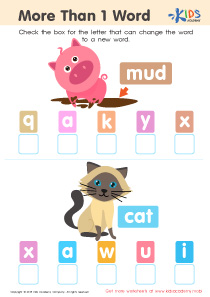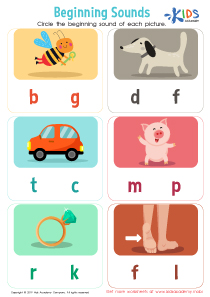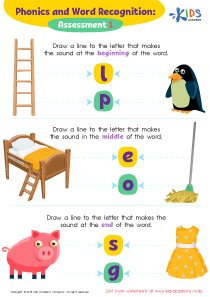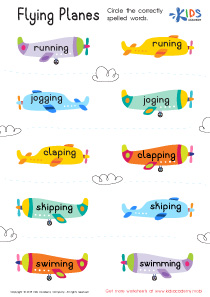Ending Sounds Worksheets for Ages 6-8
6 filtered results
-
From - To
Introduce your young learners to the essential skill of phonics with our engaging Ending Sounds Worksheets tailored specifically for ages 6-8. Our meticulously designed activities focus on helping children identify, differentiate, and understand the ending sounds of words, which is crucial for their reading and spelling development. Each worksheet combines fun illustrations with clear instructions to keep kids motivated and excited about learning. Perfect for use at home or in the classroom, these printable resources support continuous progress and reinforce core phonetic skills. Encourage your child's literacy journey with our expertly crafted ending sounds worksheets today!
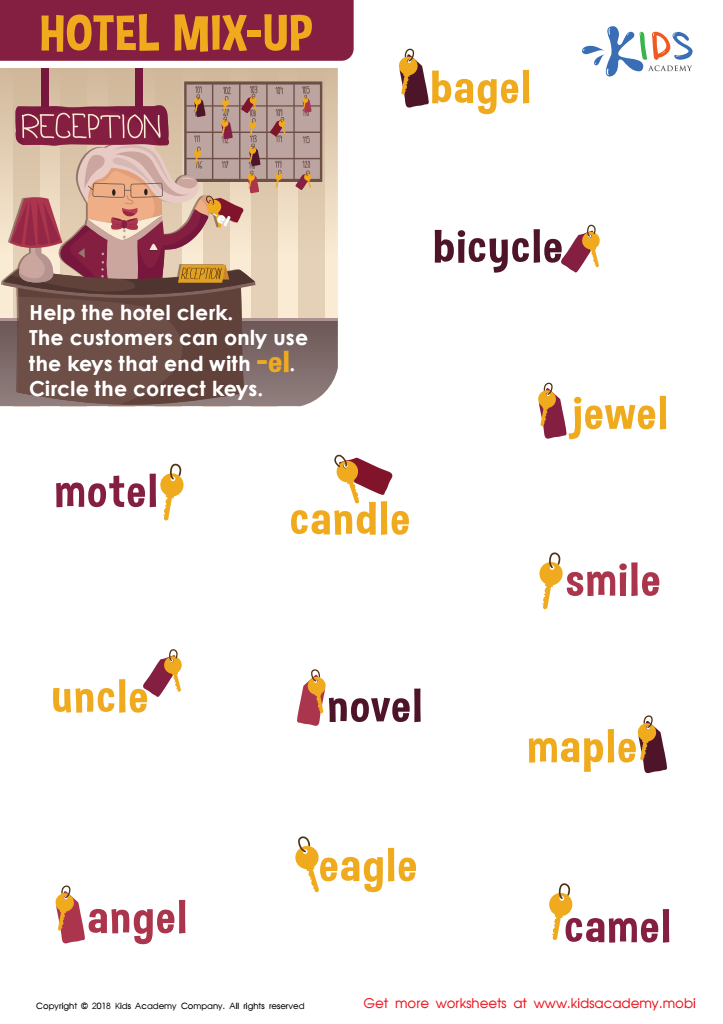

Hotel Mix-up Worksheet
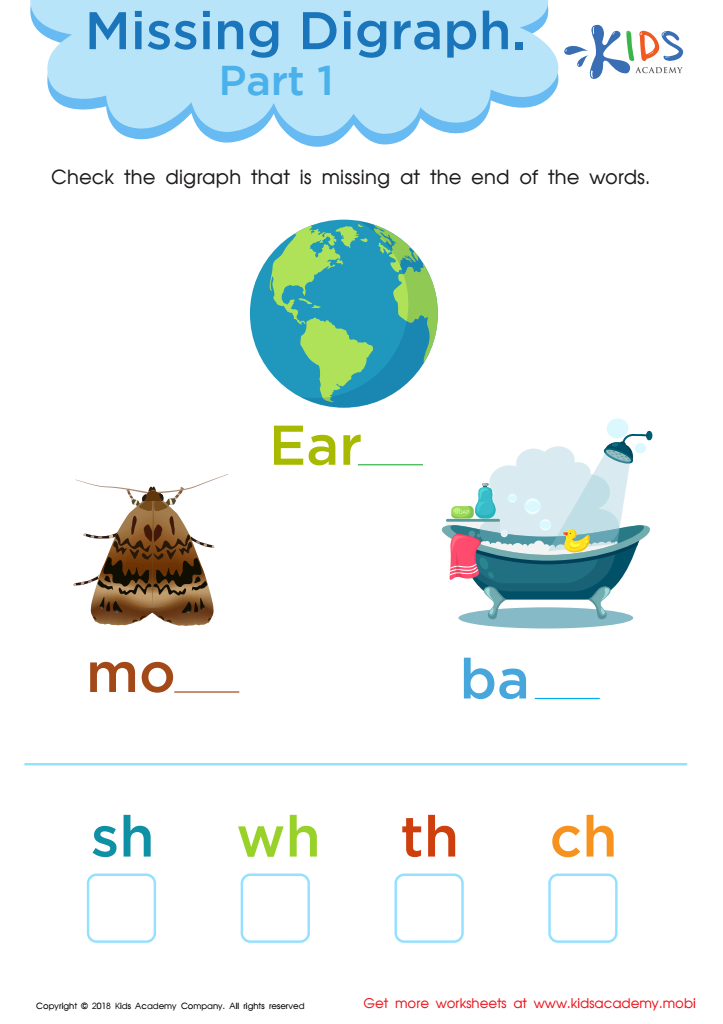

Missing Digraph: Part 1 Worksheet
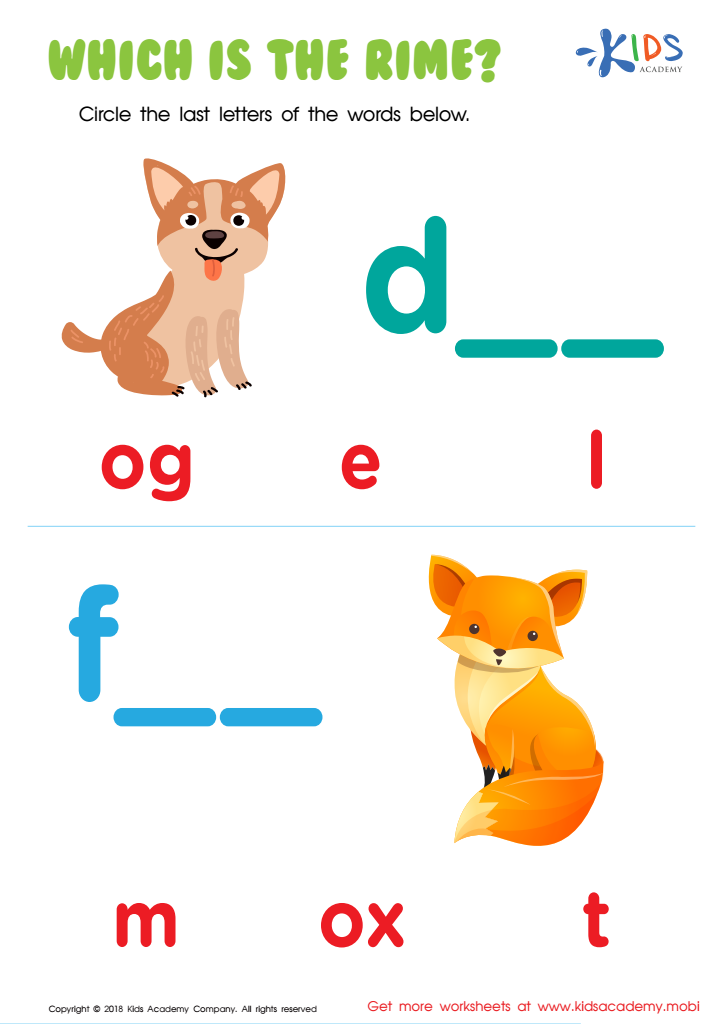

Which Is the Rime? Worksheet
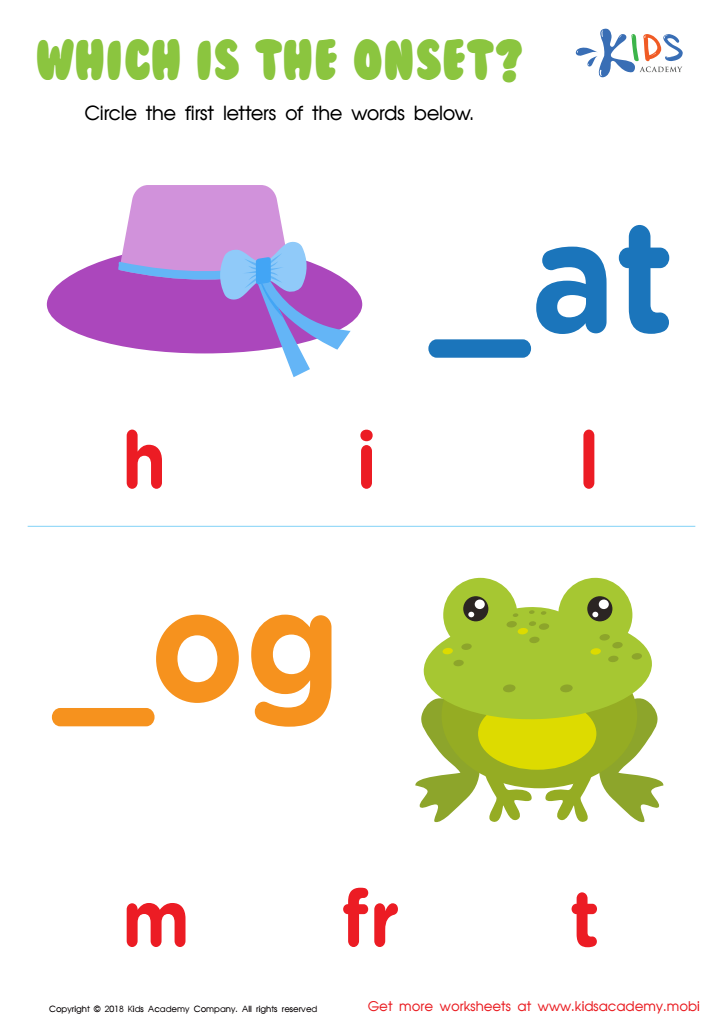

Which Is the Onset? Worksheet
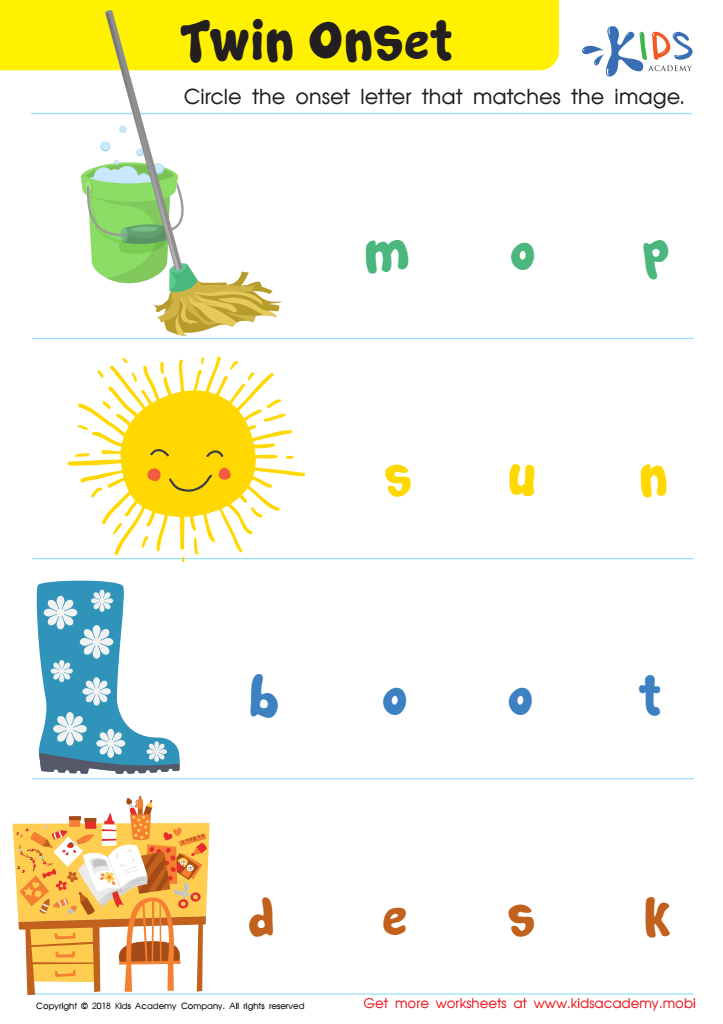

Twin Onset Worksheet
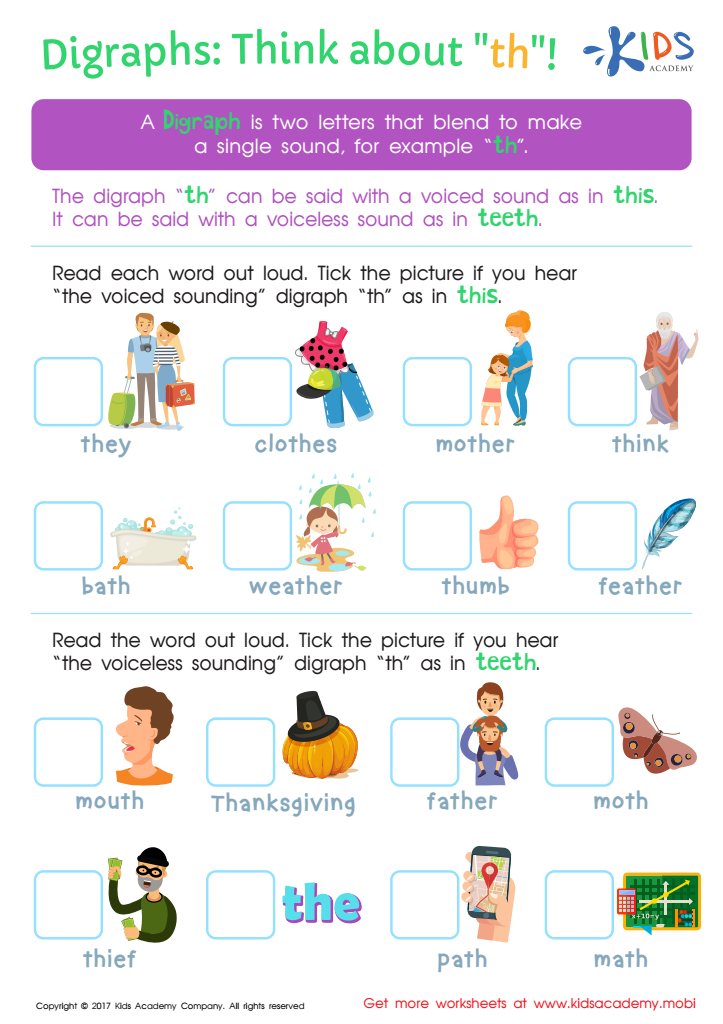

Digraphs: Think About "th" Worksheet
Parents and teachers should prioritize developing children's skills in recognizing and producing ending sounds, especially in the critical ages of 6-8. This stage represents a foundational phase in literacy development where phonemic awareness significantly contributes to reading and writing proficiency. Recognizing ending sounds, the smallest units of sound at the tail-end of words, helps children better understand spelling patterns, word recognition, and decoding skills. These abilities are essential for fluent reading, as they enable young learners to break down complex words and understand new vocabulary, boosting overall comprehension.
Children who master ending sounds tend to display more confidence in their reading abilities. This can lead to a positive feedback loop where increased reading proficiency fosters greater literary engagement and enjoyment. Moreover, being adept at identifying ending sounds supports spelling and writing skills, as children can identify and apply word families ("cat," "bat," "rat") more effectively.
Furthermore, developing these skills encourages active listening and sharper auditory discrimination, benefits that extend beyond literacy into broader aspects of cognitive and academic development. Therefore, investing time and effort in exercises and activities that focus on ending sounds will set the stage for educational success and a lifelong appreciation for reading and writing.

 Assign to the classroom
Assign to the classroom




